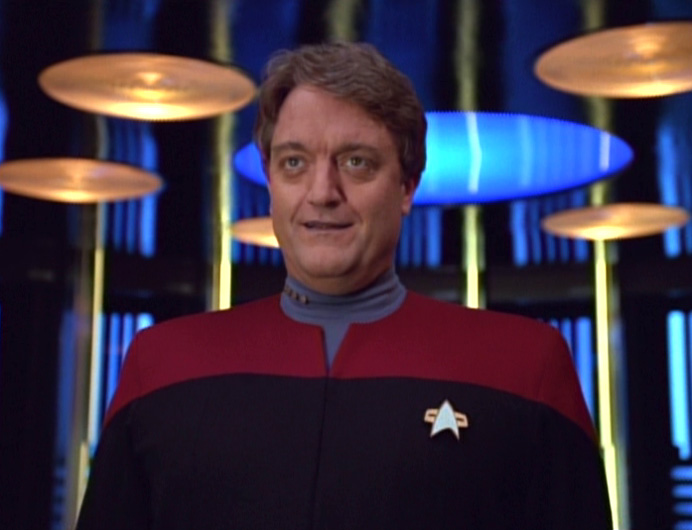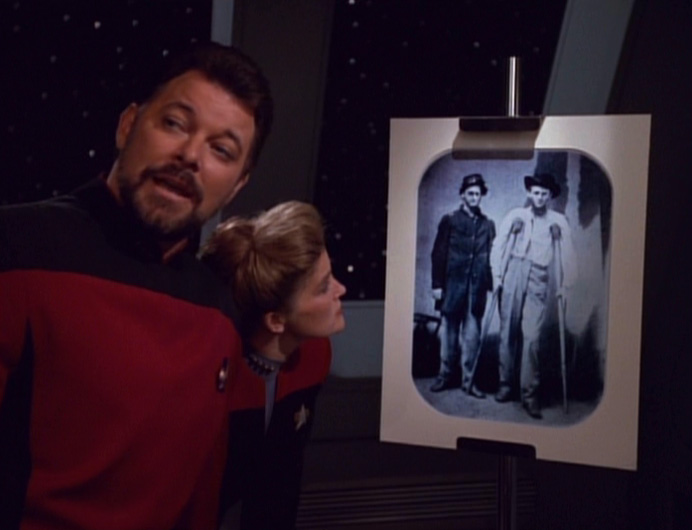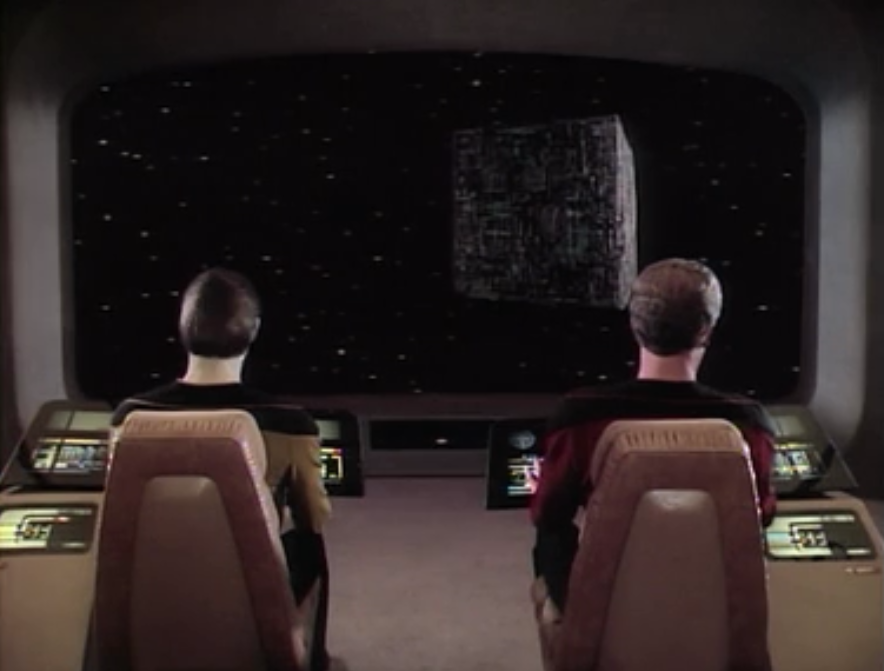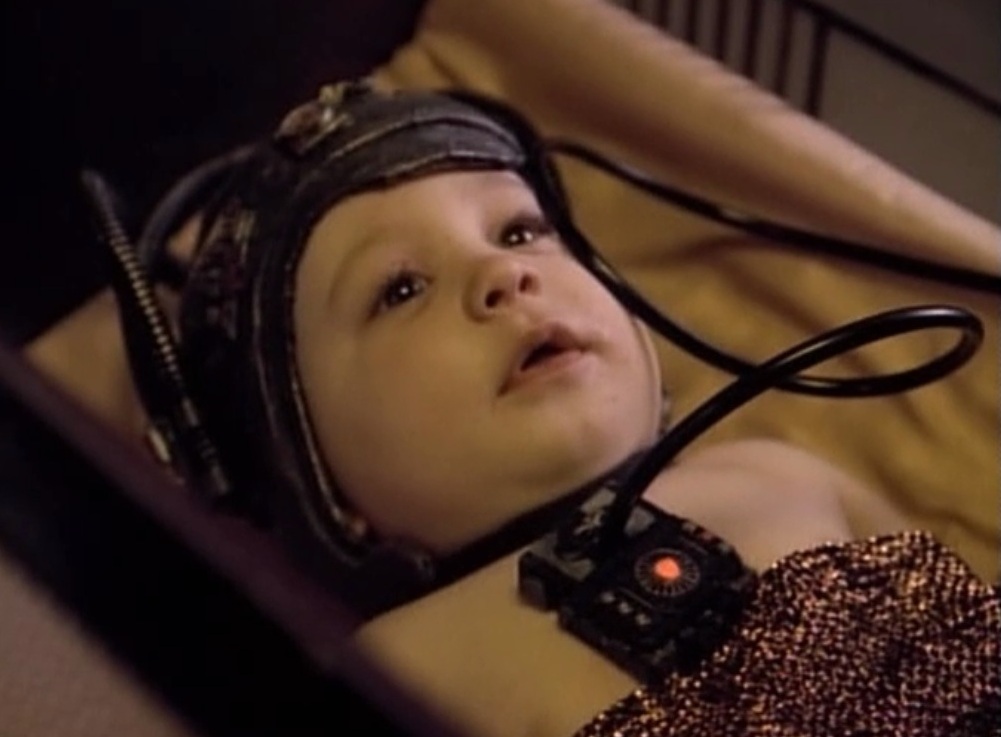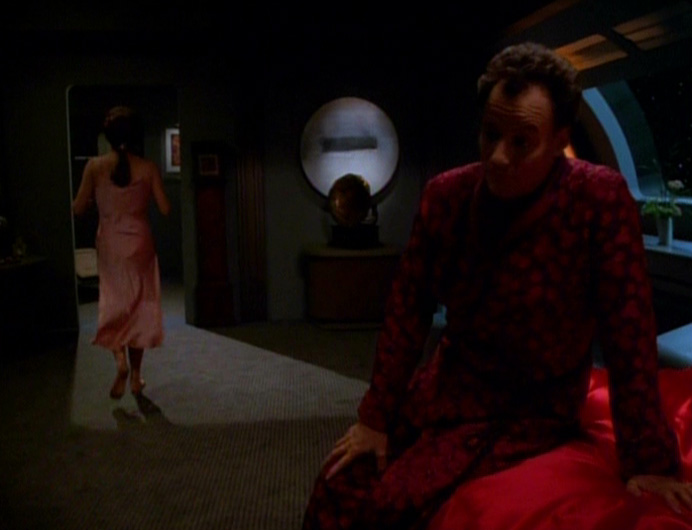
Q returns and wants to get busy with Janeway (um), complete with a heart-shaped bed (not a good sign). He eventually tells her the instability brought on by the suicide of the other Q in “Death Wish” has started a civil war (all right), with Normal Q on the rebellious side (fair enough). He wants Janeway’s help to create a child (excuse me?) to be a sort of messiah that all the Q can unite around (wait, what?). Then, Q’s old flame — a Q played by Trek favorite Suzie Plakson — shows up on the ship calling Janeway a “dog” and a bunch of other ridiculous things (oh, help me, Rhonda). A bunch of supernovas are happening around Voyager — apparently, caused by the fighting in the Continuum (weird) — and Normal Q transports himself and Janeway to the Continuum, represented to Janeway as the American Civil War (no, no, no). Female Q helps Chakotay get the ship into the Continuum (unlikely) where the crew, armed with Q weapons (oh, please) helps save Normal Q and Janeway from a firing squad (can I get my check?). Then, the fighting ends and Normal Q and Female Q decide to mate (which they could have done in the first frakking place). Back on the ship, Q shows up with what appears to be a human infant in a Starfleet uniform (baby cuteness aside, gah) and asks Janeway to be the godmother (huh?) and says she might need to babysit sometime (get my gun). Roll credits (thank goodness).
Why it’s important
Well, the Q are sort of like gods, and there’s a civil war among gods because of Voyager’s (reasonable) actions a year earlier. Given Q’s importance in second-generation Trek, a civil war among the Q is a really important, really cool concept.
But, what a disaster of a way to do it. Easily one of Trek’s biggest misfires.
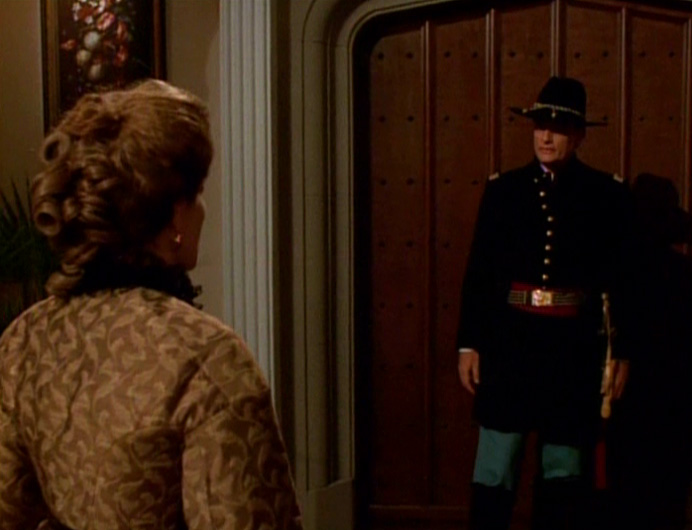
What doesn’t hold up
I don’t even know where to start. Well, yes I do.
Q (thanks in large part to the wonderful John de Lancie) is a great part of second-generation Star Trek. He brings humor to shows that could often be too stodgy (particularly TNG) and often infused a meta quality (like playing the part of fans and commenting on Riker’s beard). Indeed, some Q episodes are great, like “Q Who”, “Tapestry”, “All Good Things … “ and “Death Wish”. But others are only saved from being awful by de Lancie and his ability to spar with Patrick Stewart or Kate Mulgrew. See DS9’s “Q-Less”, or TNG’s “Hide and Q” and (arguably the worst showing) “Qpid”. This episode isn’t quite as bad as that one, but “The Q and the Grey” is a great example of where Q episodes can go wrong.
Essentially, Q’s antics become too ridiculous and he (and/or the Q, generally) end up looking not all that all-powerful. It was trippy and cool when the Continuum was represented as a small town along a desert road in “Death Wish”. It’s just ridiculous that the Voyager crew, inside the Continuum, could use Q weapons and actually turn the tide in a battle represented by an American Civil War venue. Actually, it’s the kind of distinction that you can see while marathon-watching TOS, with the effectiveness of an Earth-like setting (necessitated by real-world budgets) depending largely on whether the written rationale made any sense — think the difference between the laughable “Yangs” and “Comms” in “The Omega Glory” and the cool partial Western town in “Spectre of a Gun”.
Bottom line, everything that “Death Wish” got so right, this episode gets so very, very wrong. If not for de Lancie and Plakson (and, Mulgrew, who shined most in episodes where she could banter with a character who had an outside perspective, be it a Q or a Borg) this would be one of Voyager’s worst showings. As is, it’s still one of it’s most ridiculous. Thank goodness “Threshold” is around to make “The Q and the Grey” look somewhat reasonable.
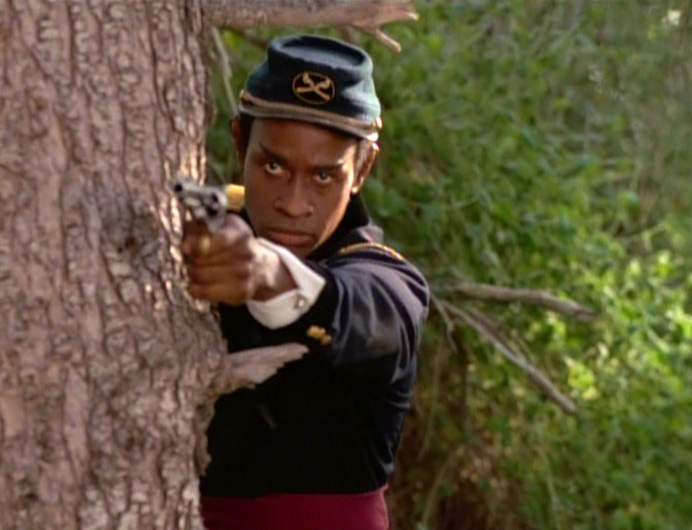
Final thoughts
We only see Q once more in Voyager (and in all of Trek) in Voyager’s final season, when Q’s troublemaking son shows up on Voyager — in another example of making the Q too “funny” and not menacing enough. Given the misfire in this episode, it’s not all that disappointing that Voyager mostly moved away from Q, I suppose.
That said, Q does call Neelix a “bar rodent,” so maybe I need to adjust my thinking …
Coming later this week …
Torres has a fever, and the only prescription, is more Paris. No word on the gold-plated diapers.

